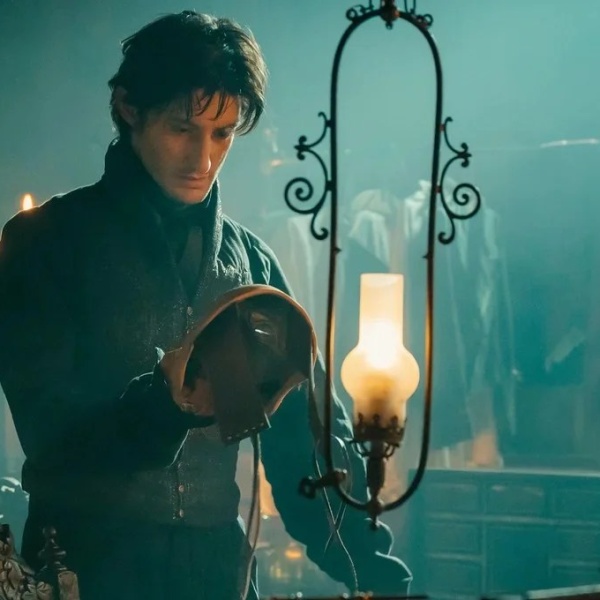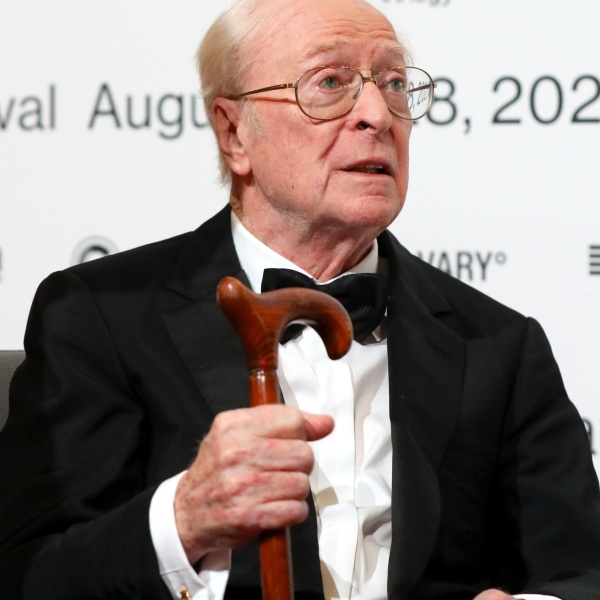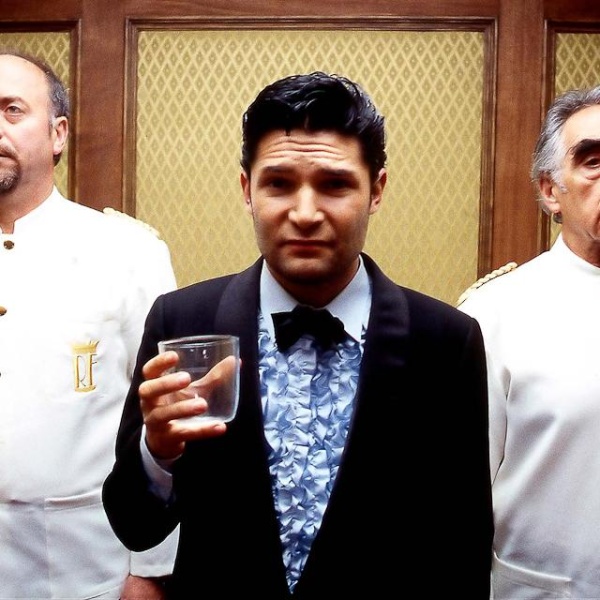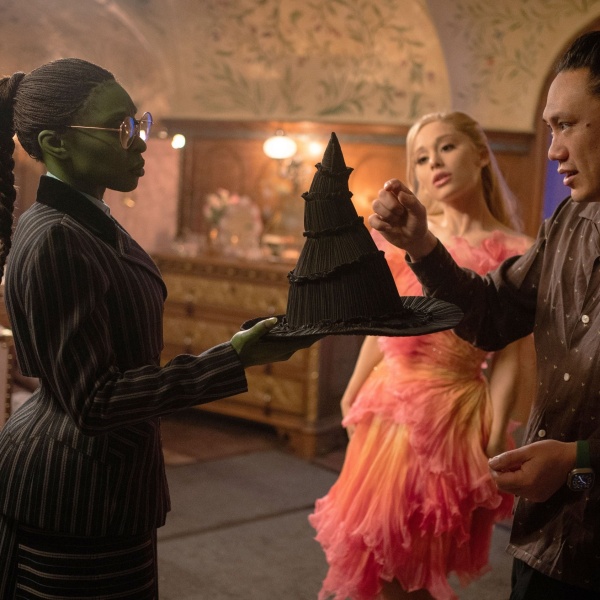It’s been two years since one of the worst school shootings in American history. On May 24, 2022, a gunman killed 21 at Robb Elementary School in Uvalde, Texas. Nineteen children were among the victims, and two teachers. It’s the kind of tragedy so horrific that outsiders to the community of 15,000 will think of it first whenever they hear the name Uvalde. And probably will for decades to come.
ABC News’ Investigative Unit wanted to go deeper. A couple of days after the shooting, the news network committed to a program called Uvalde: 365, in which they would keep journalists in Uvalde for an entire year to better understand how a small town handles the aftermath of such a tragedy, and how life goes on. The result is a unique documentary called “Print It Black,” referring to how the local newspaper, the Uvalde Leader-News, chose to run an edition the day after the shooting where the entire front page was black. “Print It Black” shares hallmarks of the kind of news docs ABC often runs — it doesn’t have a credited director, but rather three producers, Tomas Navia, Megan Hundahl Streete, and Andrew Fredericks — but by any standard goes well beyond what you’d see on ABC’s “World News Tonight” or “20/20.”
Rather than merely dispensing information, “Print It Black” provides an expansive look at Uvalde through the lens of the journalists at the Leader-News. We get to know their personalities, and the extraordinary challenges they face just keeping the lights on, as most local journalists do these days. Every journalist here wears multiple hats: One of the top editors is also the paper’s lead photographer; while Kim Rubio, who was the crime reporter, has also been involved in selling ads. Rubio becomes the emotional heart of the film, as her daughter, Lexi, was among the 19 children murdered. This is ultimately a documentary not just about these soul-scarring events that occurred, but about how you go about telling the story of such unimaginable events at all — and how precious it is that this local outlet was still able to do so, even as endless other small towns across the U.S. are now “news deserts” without local media at all.
“Print It Black” world premiered at the Dallas International Film Festival in April, where it won the Grand Jury Prize for Best Documentary. The 85-minute film is now streaming on Hulu.
IndieWire interviewed Cindy Galli, the Executive Producer of ABC News’ Investigative Unit, about the film.
IndieWire: I assume ABC News already had a relationship with the Uvalde Leader-News from the live coverage of the shooting two years ago. How did that come about in the moment and how has that relationship been maintained over time?
Cindy Galli: Actually, we didn’t already have a relationship with the paper when Robb occurred. Like many local and national media, we immediately reached out when news broke to see what information and pictures they had since they were on the scene first, but we quickly discovered that the ULN was concerned more with serving their community first than “partnering” with other, bigger news outlets. Frankly, it’s what we respected most about the staff as we watched the coverage unfold.
A couple of days after the shooting, ABC News made a commitment to stay in Uvalde for at least one year, opening a bureau and ensuring producers would be on the ground every day. We called it Uvalde: 365.

We needed to cover the chaos of the police response that was just coming to light but also wanted to tell the stories of this small community that had just been ravaged by gun violence. Two team members, Jim Hill, our senior producer, and Megan Hundahl Streete, one of our first producers on the ground who had also lived in Uvalde, spoke about capturing all of this through the perspective of those who know the community best — the local paper. We made a decision that Jim and Megan would approach the ULN to pitch that idea.
IndieWire: How did the idea of the “Print It Black” documentary itself come about? It must have been quite quickly because much of the footage in the film is from 2022, in the months after the shooting…
Galli: In their first conversations with Craig Garnett, the owner and publisher of ULN, Jim and Megan spoke about the need to tell the full story of the paper from the day of the shooting and every day after that. They wrote a pitch for a feature documentary and later met with Craig and two of his senior leaders in person. They were trepidatious. The Robb shooting was still fresh, we were still outsiders, and it would take some time before the trust was built.
We promised them that we would not make any assumptions about the narrative outcome until after the year was finished and we were done shooting. We also promised them that we would respect them, their work and their wishes — if there were times they didn’t want us following them, we wouldn’t. While Craig became more comfortable once he knew of the ABC News commitment to stay in Uvalde, he still wanted to test the waters. He did a two-week test run, allowing the producers to follow the staff so they could become accustomed to the team — and then he asked his staff what they should do. They agreed to let us follow them for the year. Craig saw the rapid decline in the local news business and viewed this as an opportunity to educate others on the role of community journalists.
Meanwhile, we worked behind the scenes at ABC News to figure out where a feature film would actually air. We’re used to producing short documentaries or longer investigations for our ABC News shows, but this was new territory and we needed a commitment so we could keep our promise to Craig. Thankfully, the head of our streaming channel, Seni Tienabeso, took a complete leap of faith and gave it a home.
IndieWire: Was there any resistance from the Uvalde News-Leader in wanting to make this documentary? Or from Kim Rubio herself? Or did she understand, as a journalist herself, the importance of documenting this moment even as she was experiencing unimaginable pain?
Galli: Any resistance was overcome with the building of trust. As it would turn out, Kim and Felix were the first to commit to the project, even before the ULN did. Kim, having been a journalist, instinctively knew that talking about Lexi and her desire for gun reform would help push her advocacy forward.
Kim often says that she will take any opportunity she has in front of her to speak about Lexi, to keep her front and center — and she’s told us that this is why she agreed to be followed for the film.

Kim, Felix and many of the other families we met in Uvalde told us that the most meaningful thing we could do as journalists was to say their children’s names whenever possible. We strove to do that in every one of our stories.
IndieWire: What steps did you take to avoid in any way exploiting the pain of Kim Rubio or the other families? I think it’s impressive how measured this documentary is, how very much it’s about the practice of journalism in a situation of unimaginable grief. But what was your own editorial process like of deciding what should go in/not go in, what space was appropriate given the grief involved, how you wouldn’t have anything overly sensationalistic?
Galli: When we first arrived in Uvalde, knowing that we were planting roots for a while, we changed our normal business model. Instead of knocking on all the doors we could, asking people if they’d talk to us, we introduced ourselves and then hung back. This is a small town that had been thrust into the national spotlight and they were getting bombarded by the media. We told people that we weren’t leaving, that we would be here when they were ready to talk. We sat in living rooms for hours, had quiet coffee conversations. No pressure. First getting to know Kim, Felix, and other families we met, allowed us a window into who they really are, not identified or defined solely as parents of a mass shooting victim. That was important and it guided what the producers felt was most important to include.
Additionally, we sought guidance from the Dart Center for Journalism and Trauma at Columbia University, which trains journalists how to best deal with victims of trauma. We had two training sessions — one halfway through the year and one as we were coming to the one-year mark — and the takeaways were invaluable. Of many lessons, the team learned that victims of tragic events have a deep sense of betrayal — even arriving late to a scheduled interview may trigger this understandable emotion — and as a result, the feelings of our subjects were top of mind for everything we did there.
IndieWire: How many camerapeople were following each of the participants? How many people did you have on the ground at any time?
Galli: Our Uvalde: 365 team was intentionally small: we wanted people to see the same faces day in and day out. We wanted the families and other community members we worked with to know well the reporters who would be telling their stories. For this reason, there were only two producers — Megan Hundahl Streete and Andrew Fredericks — who followed the ULN staff and the Rubios consistently for the film. The staff became very comfortable with them going in and out of the back door of the office each day. When the Rubios would travel to Austin or Washington DC for rallies, either or both of them would follow their journey. And there were days when they didn’t even take out a camera — they were just there to talk or listen. The consistency was key to build trust and a level of comfort. At the end of our year, all of our 365 producers had built very strong bonds with the community members they followed and found it very difficult to say goodbye to them.

We carried this philosophy into post-production and it was a very small team, led by producer Tomas Navia, who spent the year in Uvalde filming with survivors and families including the Rubios. He painstakingly screened all of the very candid and heartbreaking moments to weave the narrative threads. We felt strongly that only producers who had spent the year in Uvalde and could feel the heartbeat of the community could tell this story appropriately.
IndieWire:What does ABC News see as its role in helping to promote local journalism?
Galli: I think the film is representative of what we set out to do with Uvalde: 365, which was to first shine a light on a community that deserves it but then to keep the light trained on it after others have left, telling its stories and keeping accountability at the forefront. This is what local, community journalists do every day and their work is vital.
We were fortunate at ABC News to be given the resources to stay in Uvalde and for many of our producers who stayed, it changed their perspective on the reporter-subject relationship. We move on to the next story, the next city — but our subjects are still there, living their lives, fighting their fight. Local journalism can ensure that the light doesn’t go out when it’s needed the most.
“Print It Black” is now streaming on Hulu.







